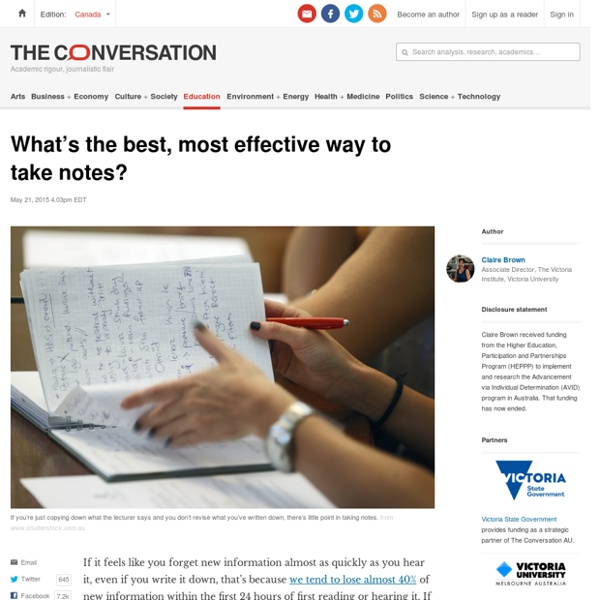The 8 Minutes That Matter Most
I am an English teacher, so my ears perk up when writers talk about their process. I've found the advice handy for lesson planning, too. That's because both writing and planning deal with craft. In writing, you want your audience to be absorbed. You want them to care about your characters. You want them be delighted by the suspense.
How to Remember What You Read
“I cannot remember the books I have read any more than the meals I have eaten; even so, they have made me.” — Ralph Waldo Emerson Why is it that some people seem to be able to read a book once and remember every detail of it for life, while others struggle to recall even the title a few days after putting down a book? The answer is simple but not easy. It's not what they read.
Nik's QuickShout: Make PDF Texts into Interactive Online Activities for Blended Learning
Pages Monday, 25 September 2017 Make PDF Texts into Interactive Online Activities for Blended Learning This tool enables teachers to build onto more traditional course book based courses and add a blended learning element. Once you have created an account you can upload PDF documents, or buy in text books from publishers or book stores and add them to courses.
Collective knowledge construction: four new strategies for learning
We all learn through experiences that either confirm or contradict prior understanding thus leading to new knowledge. At the heart of this learning process is a need for learners to both expertly evaluate the implications of the learning experience and identify new questions. It is the role of educators to not only provide a rich environment for this to happen but also to help their students develop the skills to evaluate prior learning experiences and identify potentially beneficial new experiences. In doing so, not only do learners gain experiences crucial for the current project and domain, they also gain the skills necessary to become successful lifelong learners working on new projects in different domains. Many of the compromises that our schools previously needed to make in order to provide an appropriate climate for learning have recently been made redundant by modern technology.
What’s the best way to organize my research?
When you’re writing an essay, keeping your research organized is a challenging task. Unfortunately, there isn’t a “best” way: when this question was asked by a History student we didn’t have just one single answer. The bottom line is you have to choose a system that works for your learning style and your writing habits. That said, I put it to all of the library staff to tell me how they organize their research (we’re librarians! Of course we have systems!). A few themes emerged that may help you out.
12 Free Web Annotation Tools for Teachers to Draw, Add Notes, and Highlight Sections on A Web page
1- Diigo Diigo is the first web service that comes into mind when talking about web annotation. . Diigo has a tool that lets you annotate web pages, add notes and colour specific chunks of a paragraph to share with your colleagues. 2- Sharedcopy This is another great bookmarking and annotating web service. It allows users to save a web page and annotate it the way they want via adding comments in text boxes or highlighting important parts.
Innovation! Innovation! Innovation!
One of my favourite New Yorker cartoons shows two disgruntled-looking dogs walking along the road. One says to the other “It’s always, ‘Sit!’ ‘Stay!’ ‘Heel!’ – Never ‘think’, ‘innovate,’ ‘be yourself.’”
Mentally Owning a Book – The Mission – Medium
Reading is one of the key ways we learn new things. And while it’s easy to pick a book up and turn the pages, it’s harder to actually understand and apply the lessons. Let me break down a few points that will help you get the most out of reading after you finish a book. First, if you’re talking about non-fiction or reading to learn, you should be taking notes while you read. I do this in the margins of the book and in the front and back covers.
5 Free Annotation and Collaboration Tools for Web Projects
This post originally appeared on the American Express OPEN Forum, where Mashable regularly contributes articles about leveraging social media and technology in small business. Specific, contextual feedback is crucial for teams collaborating online, which is why it's so important to make receiving it as fast, efficient and easy as possible. Asking for feedback can be tedious and is often done out of context, for example, via e-mail. However there are numerous tools available to make the task of gathering and giving feedback for web projects simpler and swifter.
Opinion: stick or carrot?
Last semester I experimented with a new idea in my consumer behavior class. I gave pop quizzes on the assigned readings but with a little twist. First and foremost, students were not required to take the quizzes.



